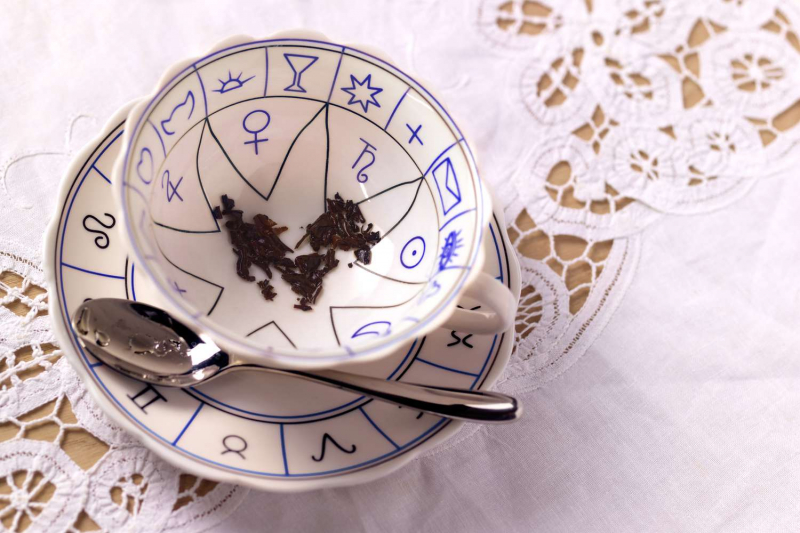"Tasseography" is the art of reading tea leaves

Tasseography (also known as tasseomancy, tassology, or tasseology) is a divination or fortune-telling method that interprets patterns in tea leaves, coffee grounds, or wine sediments. Tasseography is believed to have been around for nearly as long as there has been tea. According to legend, the practice began in ancient China when friends sat enjoying tea and conversation, as friends still do when they noticed tea leaves at the bottom of their cups clumped in patterns that looked like objects or symbols that they interpreted as representative of their lives. Through the centuries, the practice has followed tea routes through Asia and Europe and is still alive and well.
Before you make your tea with the intention of reading the leaves, you need to choose the proper tea for the job. Loose tea is highly recommended rather than cutting open a tea bag and using the tea inside. This is because loose tea leaves are larger than the leaves used in tea bags, and they are more suited to forming recognizable symbols and figures at the bottom of a teacup. Avoid using teas with pieces of fruit or flowers as they will obstruct reading the leaves.
A white or light-colored cup works best so that the outlines and dots of the tea leaves can be clearly seen. Zodiac cup, Playing Card cup, and Symbol cup are the 3 most famous cups for Tasseography. However, all you need to get started reading tea leaves is a plain white teacup. In general, readers are studying the leaves to look for patterns, symbols, lines, and figures. The position of the leaves in the cup is important to the strength of their meaning. There are countless symbols in Tasseography, some of the more common symbols are: anchors, Birds, butterflies, circles, clover, cows, cross, dragons, fish, hammers, hearts, houses, knives, lines, mountains, mushrooms, pears, pig, rabbit, reptile, scissor, sheep, snake, star, tree, umbrella, unicorn.















